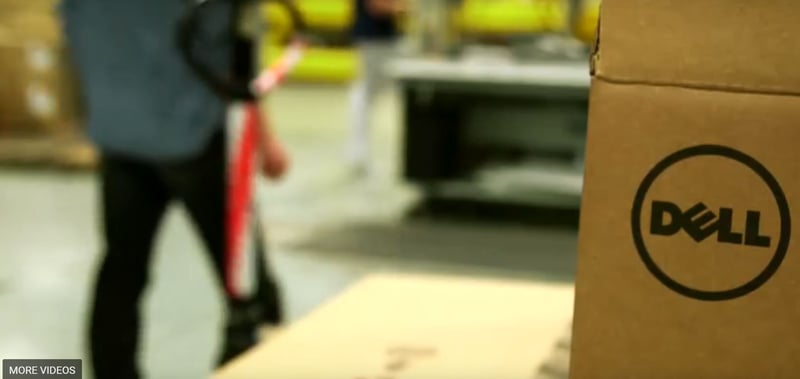Some clever ways companies use Agile Manufacturing to compete
Matthew Fountain, Published: November 9, 2017 - Updated: October 13, 2023 (8 min read)
You may have seen how Agile Manufacturing is providing some answers for manufacturers operating in an increasingly globalised, technology-driven and customer-centric marketplace.
In our previous post, we discovered that Agile Manufacturing is about being able to respond to such demands in a timely and decisive manner – all of which adds up to greater competitiveness.
We also discussed how manufacturers can build agility into their operations by connecting customer service, marketers and production teams through IT systems, developing a highly skilled workforce to enable fast change, and implementing flexible product and line design.
We had such a great response to that piece that we decided to follow it up with four real-life examples of Agile Manufacturing, nice and close to home.
Before you begin: read the Comprehensive guide to agile manufacturing.
Case #1: Connecting the customer to production

A major Australian soft drink manufacturer wanted to connect the customer experience directly to production, to improve their response time and response quality to customer complaints and queries.
To address this challenge, our sister company, Nukon implemented an information database system which connected the Customer Complaint Hotline directly to the production system.
It involved applying a series of automated business rules which allowed Customer Complaint Hotline staff to quickly and accurately identify which products were made at what location. Specifically, each bottle’s product code could be traced back to the production facility, line, time of manufacture, and the line leader and shift manager details.
This allowed the company to react in real-time to product issues but also gave the manufacturing teams visibility into the value and impression they created with their customer.
Now, instead of waiting for daily and weekly reporting, the company can identify and react to issues by the hour. The accuracy of complaint data was increased by up to 95 percent.
This is a classic example of an Agile Manufacturing method. It used automation and technology to connect product design and production directly to the customer, which increased the speed at which the business could respond.
Case #2: Gain international visibility and standardisation

Dell Computing, harnessed a new enterprise resourcing system (ERP) to integrate its seven manufacturing facilities and outsourced operations to improve reliability and reduce downtime in its most mature factory by 75 percent. Central to achieving this was an agile ERP (Microsoft Dynamic AX), which replaced 75 different operational and IT applications across all seven facilities.
This integrated platform allowed them to run the business end-to-end: from raw materials to production, through to shipping and customer service. In addition to this standardisation, Dell reduced its IT costs by 150 million and achieved a business-wide capability to react to changing market demands.
Dell achieved a level of Agile Manufacturing through using an information and communication infrastructure that facilitated collaboration and standardisation. This included the integration of IT and operations systems for greater data visibility and actionable insights.
Case #3: Build flexibility into production layout

SAGE recently had an opportunity to optimise its advanced manufacturing layout to address its unique challenge; the majority of its manufacturing orders are unique to a project. There’s no standard product.
In short: the facility’s layout needed to be flexible enough to accommodate a large range of diverse orders.
“While we also do manufacturing for original equipment manufacturers (OEMs), which have ‘standard products’, most of our production changes day to day, week to week,” explains SAGE General Manager of Operations, Paul Johnson.
In an industry-leading design, half of the shop floor was laid out with reconfigurable assembly cells. Each cell has its own mobile workbenches, cable storage, electrical outlets, and a complete set of tools and equipment. Here, every employee has what they need, on-hand, to minimise wasted movement, such as walking across the room for a tool. Other improvements include having designated work areas for machining and preparation, and a warehousing automated vertical storage solution.
The design was achieved with no additional capital expenditure, using only what was already available – a great take-home message for other manufacturers wanting to improve production through layout. The new facility has increased its capacity and quality while reducing production costs.
Here, the manufacturer used Agile Manufacturing to build flexibility in production layout and process, which allowed for fast changeover of different products and levels of customisation.
Case #4: Reducing startup time for new product variations

A global medical device manufacturer that delivers high-volume products was losing its competitive edge due to technological advancements. It had historically achieved a competitive advantage through a blend of high quality and large scale. But its competitors had begun introducing products with “the potential to redefine entire categories”.
“The company’s leadership realized [they] would require more flexibility, not only on the shop floor but also upstream, during product development. Indeed, the two needs were interrelated,” the McKinsey report says.
In response, the company gradually increased the proportion of shared components and designs in some products (and product families) to allow it to “produce its own new offerings on the same machines and production lines”. The company estimates it has lowered capital costs for targeted products by a massive 40 percent, and reduced start-up time for new product variations by 75 percent.
This organisation used another core Agile Manufacturing approach: building flexibility into the line and product/s by ensuring lines are capable of product variations that may not be designed yet.
Summary
To be agile is to have “the capability to survive and prosper in conditions of unpredictable change by reacting quickly and effectively to changing markets”, according to the International Journal of Science and Engineering Applications research.
There’s never been a time or an industry where this has been so relevant.
We’ve outlined just four examples of how companies have applied Agile Manufacturing to achieve greater responsiveness. In practice, Agile Manufacturing can take many forms. And, even the smallest of steps towards this can proactively pave the way for greater efficiency and agility in your operations.
Keeping your equipment healthy is key to remaining agile. When a machine stops, it can quickly escalate to calling in external help – sometimes unnecessarily. The Breakdown Checklist is designed to get you back online faster. It will get your team thinking about what caused the breakdown and assess the need for external advice. Download the free downtime checklist here.









